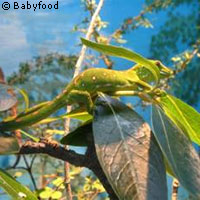Scientists develop surfaces that are sticky on command
EU-funded researchers have developed a pair of surfaces which can stick together and separate on command. While nature has created so-called switchable adhesive systems time and again (lizards and insects make use of them to climb up walls, for example), re-creating them in the lab is rather tricky. Writing in the journal Angewandte Chemie, the UK and German scientists explain how they have developed such a system in which the stickiness of the surfaces is regulated by changing the pH (acidity) of the surrounding solution. One surface consists of a polyacid gel, a three-dimensional polymer containing many acid groups and which has been soaked in liquid to form a solid, gelatinous mass. The opposite surface is a silicon chip bearing a polybase. The polybase has polymer chains that stretch up from the support in a brush-like manner. In contrast to the acidic gel, this polymer brush has many basic groups. In water or weak acids, the acidic groups of the gel are positively charged, while the basic groups of the brush are negatively charged, causing the two surfaces to be attracted to one another and stick together. Further adhesive power comes in the form of hydrogen bonds, which form between the two surfaces. However, if the solution is made more acidic (with a pH value of around 1), the hydrogen bonds break up and the basic groups lose their charge. As a result, the surfaces no longer stick together and can be carefully separated without any damage. The detachment is reversible; if the pH is raised, making the solution less acidic, the gel and brush will stick together again. The cycle can be repeated many times. 'By changing the environmental pH value, we can control in situ whether the gel adheres to the grafted layer or whether it dissociates,' the researchers write. 'Such control over adhesion may have applications in actuators, microfluidics, drug delivery, personal care products, or even in the understanding of biological materials.' EU funding for the work came through the Marie Curie Training Network PolyFilm.
Countries
Germany, United Kingdom



